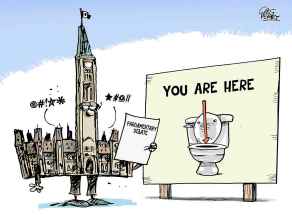Police are on the way… Officers are dispatched an average of 600 times a day; the Free Press finds out where they're headed and why
Read this article for free:
or
Already have an account? Log in here »
To continue reading, please subscribe:
Monthly Digital Subscription
$0 for the first 4 weeks*
- Enjoy unlimited reading on winnipegfreepress.com
- Read the E-Edition, our digital replica newspaper
- Access News Break, our award-winning app
- Play interactive puzzles
*No charge for 4 weeks then price increases to the regular rate of $19.00 plus GST every four weeks. Offer available to new and qualified returning subscribers only. Cancel any time.
Monthly Digital Subscription
$4.75/week*
- Enjoy unlimited reading on winnipegfreepress.com
- Read the E-Edition, our digital replica newspaper
- Access News Break, our award-winning app
- Play interactive puzzles
*Billed as $19 plus GST every four weeks. Cancel any time.
To continue reading, please subscribe:
Add Free Press access to your Brandon Sun subscription for only an additional
$1 for the first 4 weeks*
*Your next subscription payment will increase by $1.00 and you will be charged $16.99 plus GST for four weeks. After four weeks, your payment will increase to $23.99 plus GST every four weeks.
Read unlimited articles for free today:
or
Already have an account? Log in here »
Hey there, time traveller!
This article was published 01/10/2018 (2630 days ago), so information in it may no longer be current.
It’s a situation that plays out every minute of the day in Winnipeg.
Somewhere in the city a crime is committed. A victim, or witness, picks up a phone. They dial 911 and a light flashes in the police call centre. The caller hears a calm, steady voice on the line.
The Winnipeg Police Service Communications Centre received a total of 585,984 calls to its emergency and non-emergency lines in 2017, an average of one a minute.
As a result of many of those calls, police were dispatched more than 600 times a day, or 25 an hour.
Through a freedom of information request, the Free Press has obtained a log of police dispatches between Jan. 1, 2017 and March 31, 2018. The data shows police were dispatched 275,670 times in that period, with the log including priority level, event type, date, time and approximate location.
The Free Press has analyzed that data to find out what it can tell Winnipeggers about crime in their city.
(function() {
var paidAccessCheck = function(){
if($(“.paidaccess”).css(“display”) == “block”){
var elements = Array.prototype.slice.call(document.querySelectorAll(“.g-artboard[data-min-width]”)),
widthById = {};
elements.forEach(function(el) {
var parent = el.parentNode,
width = widthById[parent.id] || parent.getBoundingClientRect().width,
minwidth = el.getAttribute(“data-min-width”),
maxwidth = el.getAttribute(“data-max-width”);
widthById[parent.id] = width;
if (+minwidth = width || maxwidth === null)) {
el.style.display = “block”;
} else {
el.style.display = “none”;
}
});
try {
if (window.parent && window.parent.$) {
window.parent.$(“body”).trigger(“resizedcontent”, [window]);
}
if (window.require) {
require([‘foundation/main’], function() {
require([‘shared/interactive/instances/app-communicator’], function(AppCommunicator) {
AppCommunicator.triggerResize();
});
});
}
} catch(e) { console.log(e); }
clearInterval(verifyPaidAccess);
}
}
var verifyPaidAccess = setInterval(paidAccessCheck,500);
// only want one resizer on the page
if (document.documentElement.className.indexOf(“g-resizer-v3-init”) > -1) return;
document.documentElement.className += ” g-resizer-v3-init”;
// require IE9+
if (!(“querySelector” in document)) return;
function resizer() {
var elements = Array.prototype.slice.call(document.querySelectorAll(“.g-artboard[data-min-width]”)),
widthById = {};
elements.forEach(function(el) {
var parent = el.parentNode,
width = widthById[parent.id] || parent.getBoundingClientRect().width,
minwidth = el.getAttribute(“data-min-width”),
maxwidth = el.getAttribute(“data-max-width”);
widthById[parent.id] = width;
if (+minwidth = width || maxwidth === null)) {
el.style.display = “block”;
} else {
el.style.display = “none”;
}
});
try {
if (window.parent && window.parent.$) {
window.parent.$(“body”).trigger(“resizedcontent”, [window]);
}
if (window.require) {
require([‘foundation/main’], function() {
require([‘shared/interactive/instances/app-communicator’], function(AppCommunicator) {
AppCommunicator.triggerResize();
});
});
}
} catch(e) { console.log(e); }
}
document.addEventListener(‘DOMContentLoaded’, resizer);
// feel free to replace throttle with _.throttle, if available
window.addEventListener(‘resize’, throttle(resizer, 200));
function throttle(func, wait) {
// from underscore.js
var _now = Date.now || function() { return new Date().getTime(); },
context, args, result, timeout = null, previous = 0;
var later = function() {
previous = _now();
timeout = null;
result = func.apply(context, args);
if (!timeout) context = args = null;
};
return function() {
var now = _now(), remaining = wait – (now – previous);
context = this;
args = arguments;
if (remaining wait) {
if (timeout) {
clearTimeout(timeout);
timeout = null;
}
previous = now;
result = func.apply(context, args);
if (!timeout) context = args = null;
} else if (!timeout && options.trailing !== false) {
timeout = setTimeout(later, remaining);
}
return result;
};
}
})();
.g-artboard {
margin:0 auto;
}
position:relative;
overflow:hidden;
width:200px;
}
.g-aiAbs{
position:absolute;
}
.g-aiImg{
display:block;
width:100% !important;
}
#g-call-flowchart-Artboard_1 p{
font-family:nyt-franklin,arial,helvetica,sans-serif;
font-size:13px;
line-height:18px;
margin:0;
}
#g-call-flowchart-Artboard_1 .g-aiPstyle0 {
font-size:21px;
line-height:25px;
text-align:center;
color:#000000;
}
#g-call-flowchart-Artboard_1 .g-aiPstyle1 {
font-size:12px;
line-height:14px;
text-align:center;
color:#000000;
}
.g-aiPtransformed p { white-space: nowrap; }

You just called the police.
What happens next?
Caller phones either 911 or the non-emergency line
A call-taker will take a statement from the caller and set a priority between zero and nine, zero being the highest priority
The call is sent to the dispatcher, who can elect to increase the priority level, but cannot lower it
With priority level in mind, police attend the event
position:relative;
overflow:hidden;
width:600px;
}
.g-aiAbs{
position:absolute;
}
.g-aiImg{
display:block;
width:100% !important;
}
#g-call-flowchart-Artboard_3 p{
font-family:nyt-franklin,arial,helvetica,sans-serif;
font-size:13px;
line-height:18px;
margin:0;
}
#g-call-flowchart-Artboard_3 .g-aiPstyle0 {
font-size:21px;
line-height:25px;
text-align:center;
color:#000000;
}
#g-call-flowchart-Artboard_3 .g-aiPstyle1 {
font-size:12px;
line-height:14px;
text-align:center;
color:#000000;
}
.g-aiPtransformed p { white-space: nowrap; }

You just called the police. What happens next?
A call-taker will take a statement from the caller and set a priority between zero and nine, zero being the highest priority.
Caller phones either 911 or the non-emergency line.
The call is sent to the dispatcher, who can elect to increase the priority level, but cannot lower it.
With priority level in mind, police attend the event.
While crime is concentrated downtown, no neighbourhood is immune.
Reports of residential break-and-enter and firearm offences, for example, stream into the call centre from every area of the city. The data also underscores how the WPS routinely has its resources drained by non-core policing activities, particularly mental-health related calls. We’ll take a closer look at those three areas in stories later this week.
Of the 585,984 calls placed to the WPS call centre last year, 38 per cent were filtered out through an interactive voice response system. The rest were answered by one of the 84 full-time call-takers and dispatchers who staff the centre.
var paidAccessCheck = function(){
if($(“.paidaccess”).css(“display”) == “block”){
var data = {
“version”: “1.4.0”,
“id”: “5dYhNrvEBtvg2zWNk”,
“heading”: “2017 incoming call volume percentage by hour”,
“qualifier”: “”,
“source”: “SOURCE: Winnipeg police”,
“tags”: [],
“chart”: {
“class”: “primary”,
“hasHours”: true,
“data”: “Percentage of Calls, timen12 a.m.,3.60n ,3.10n ,2.90n ,2.60n ,2.10n ,1.80n ,1.90n ,2.40n8 a.m.,3.30n ,4.10n ,4.60n ,4.80n ,5.00n ,5.20n ,5.30n ,5.60n ,5.80n5 p.m,5.60n ,5.50n ,5.30n ,5.20n ,5.20n ,4.90n ,4.30”,
“options”: {
“annotations”: true,
“expanded”: false,
“footer”: true,
“head”: true,
“indexed”: false,
“interpolation”: false,
“legend”: true,
“qualifier”: true,
“share_data”: false,
“social”: false,
“stacked”: false,
“tips”: false,
“type”: “column”,
“x_axis”: true,
“y_axis”: true
},
“x_axis”: {
“display”: true,
“scale”: “ordinal”,
“ticks”: “auto”,
“orient”: “bottom”,
“format”: “comma”,
“nice”: false
},
“y_axis”: {
“display”: true,
“scale”: “linear”,
“ticks”: “2”,
“orient”: “right”,
“format”: “comma”,
“suffix”: “%”,
“nice”: true
},
“annotations”: {
“highlight”: [],
“range”: [],
“text”: [
{
“text”: “Peak call volume nafter 4 p.m. (5.8%)”,
“valign”: “middle”,
“text-align”: “middle”,
“position”: {
“x”: 0.4038,
“y”: 0.1219
}
}
],
“pointer”: [
{
“curve”: -0.3,
“position”: [
{
“x”: 0.399,
“y”: 0.0576
},
{
“x”: 0.6722,
“y”: 0.0521
}
]
}
]
}
}
};
root.ChartTool = root.ChartTool || [];
root.ChartTool.push({id: “ct-” + data.id, data: data});
var b = document.getElementsByTagName(“body”)[0];
if (!b.classList.contains(“ct-charttool-init”)) {
b.classList.add(“ct-charttool-init”);
var c = document.createElement(“link”);
var j = document.createElement(“script”);
c.href = “https://wfpdata.s3.amazonaws.com/chart-tool/v4/chart-tool.css?token=0”; c.rel = “stylesheet”;
j.src = “https://wfpdata.s3.amazonaws.com/chart-tool/v4/chart-tool.js?token=0”; j.async = true; j.defer = true;
document.getElementsByTagName(“head”)[0].appendChild(c);
document.getElementsByTagName(“head”)[0].appendChild(j);
}
clearInterval(verifyPaidAccess);
}
}
var verifyPaidAccess = setInterval(paidAccessCheck,10);
})(this);
Last month, the centre’s performance was dragged into the municipal election spotlight after the local police union unveiled an attack ad against Mayor Brian Bowman. The ad suggested he was responsible for staff shortages at the call centre that have led to long queues for people reporting crime — many of whom are in distress, desperate for help.
In response, Bowman accused the union of fear-mongering, and WPS Chief Danny Smyth said the ad wasn’t based in fact.
The 411 on 911
This is the first of a four-part series based on a Free Press data analysis of 275,670 instances in which Winnipeg Police Service officers were dispatched between Jan. 1 2017 and March 31, 2018.
According to police data, 93 per cent of all calls to the centre in 2017 were answered within 10 seconds. The remaining seven per cent of calls were answered in 30 to 180 seconds.
On many of those calls, the call-takers listen as people recount some of the worst experiences of their lives. Sometimes, even taking a report can be a traumatic experience.
“It could be a bad suicide call, where maybe someone’s committed suicide while you’re on the phone with them,” said Stacey Cann, communications centre supervisor.
var paidAccessCheck = function(){
if($(“.paidaccess”).css(“display”) == “block”){
var data = {
“version”: “1.4.0”,
“id”: “xZb3j3teBwzjjqybA”,
“heading”: “Total dispatched events”,
“qualifier”: “2012-2017”,
“source”: “SOURCE: Winnipeg police annual report”,
“tags”: [],
“chart”: {
“class”: “primary”,
“hasHours”: false,
“data”: “Year,Citizen-generated,Police-generated n2012-01-01,131145,49224n2013-01-01,122231,63606n2014-01-01,123759,79344n2015-01-01,127886,72613n2016-01-01,137476,68165n2017-01-01,144591,80540”,
“options”: {
“annotations”: true,
“expanded”: false,
“footer”: true,
“head”: true,
“indexed”: false,
“interpolation”: “linear”,
“legend”: true,
“qualifier”: true,
“share_data”: false,
“social”: false,
“stacked”: false,
“tips”: false,
“type”: “line”,
“x_axis”: true,
“y_axis”: true
},
“x_axis”: {
“display”: true,
“scale”: “time”,
“ticks”: “auto”,
“orient”: “bottom”,
“format”: “comma”,
“nice”: false
},
“y_axis”: {
“display”: true,
“scale”: “linear”,
“ticks”: “5”,
“orient”: “right”,
“format”: “comma”,
“nice”: true
},
“annotations”: {
“highlight”: [],
“range”: [],
“text”: [],
“pointer”: []
}
}
};
root.ChartTool = root.ChartTool || [];
root.ChartTool.push({id: “ct-” + data.id, data: data});
var b = document.getElementsByTagName(“body”)[0];
if (!b.classList.contains(“ct-charttool-init”)) {
b.classList.add(“ct-charttool-init”);
var c = document.createElement(“link”);
var j = document.createElement(“script”);
c.href = “https://wfpdata.s3.amazonaws.com/chart-tool/v4/chart-tool.css?token=0”; c.rel = “stylesheet”;
j.src = “https://wfpdata.s3.amazonaws.com/chart-tool/v4/chart-tool.js?token=0”; j.async = true; j.defer = true;
document.getElementsByTagName(“head”)[0].appendChild(c);
document.getElementsByTagName(“head”)[0].appendChild(j);
}
clearInterval(verifyPaidAccess);
}
}
var verifyPaidAccess = setInterval(paidAccessCheck,10);
})(this);
Other times, call-takers could be listening in as a crime is committed, or speaking with someone who’s just been victimized. After promising help will be sent as soon as possible, the call-taker assigns a priority level, between zero and nine, to the incident.
"Anything from zero to two is an emergency, someone’s life is in danger, period. There’s pending danger to someone’s life. Someone could die. Three and four are urgent events, so a quick response is needed for safety reasons. Five and above are considered non-emergency, so there’s nothing pressing about the call and it can wait," Cann said.
After a priority level is set, a report is shipped to a dispatcher for review. The dispatchers can upgrade the priority level if they notice something the call-taker has missed.

“It’s kind of giving that second set of eyes on it. But that doesn’t happen often, because you’re trusting that first person that spoke to the caller,” Cann said.
The dispatcher then notifies police, and — depending on the incident — the sound of sirens fills the air as a unit is dispatched to the scene.
Looking over the last two decades, the overall crime rate in Winnipeg has decreased; there has, however, been a slight upward trend in recent years.
During the last five years, the number of police dispatches have increased. Officers were dispatched to 44,762 more events last year than they were in 2012. Calls for service have also increased, from 530,620 in 2013 to 585,984 in 2017.
“Years ago we used to see slower months, but we’re not seeing the slower months anymore. What we’re seeing is call volumes that are consistently high, and that’s kind of concerning,” Cann said.
In the 15 months of data analyzed by the Free Press, the most frequent reports to the call centre were for domestic disturbances (20,163), well-being checks (18,717), requests for assistance (12,382) and disturbances (10,409).
var paidAccessCheck = function(){
if($(“.paidaccess”).css(“display”) == “block”){
var data = {
“version”: “1.4.0”,
“id”: “vDnTyxPFD5pTvwH8Q”,
“heading”: “Top service call types”,
“qualifier”: “Jan. 1 2017 – March 31, 2018”,
“source”: “SOURCE: Winnipeg police service call data.*Data includes primary call reasons and therefore hangups could be re-categorized after subsequent callS”,
“tags”: [],
“chart”: {
“class”: “primary”,
“hasHours”: false,
“data”: “Event type, numbernDomestic disturbance,20163nWell-being,18717nAssistance required,12382nDisturbance,10409nSuspicious person,8319nIntox. person,7276nTraffic complaints,6854nSuicide threat,6627nFamily trouble,6288nAssault,5755nThreat reported,4726nB&E residential,4661nWarrant,4173nMissing person,3585nMVA,2791n911 hang-up*,2686nImpaired driving,2377nNoise,2246nWeapons (non-firearm),2205nFight,2192”,
“options”: {
“annotations”: true,
“expanded”: false,
“footer”: true,
“head”: true,
“indexed”: false,
“interpolation”: false,
“legend”: true,
“qualifier”: true,
“share_data”: true,
“social”: true,
“stacked”: false,
“tips”: true,
“type”: “bar”,
“x_axis”: true,
“y_axis”: true
},
“x_axis”: {
“display”: true,
“scale”: “linear”,
“ticks”: “auto”,
“orient”: “bottom”,
“format”: “comma”,
“nice”: false
},
“y_axis”: {
“display”: true,
“scale”: “ordinal”,
“ticks”: “auto”,
“orient”: “right”,
“format”: “comma”,
“nice”: false
},
“annotations”: {
“highlight”: [],
“range”: [],
“text”: [],
“pointer”: []
}
}
};
root.ChartTool = root.ChartTool || [];
root.ChartTool.push({id: “ct-” + data.id, data: data});
var b = document.getElementsByTagName(“body”)[0];
if (!b.classList.contains(“ct-charttool-init”)) {
b.classList.add(“ct-charttool-init”);
var c = document.createElement(“link”);
var j = document.createElement(“script”);
c.href = “https://wfpdata.s3.amazonaws.com/chart-tool/v4/chart-tool.css?token=0”; c.rel = “stylesheet”;
j.src = “https://wfpdata.s3.amazonaws.com/chart-tool/v4/chart-tool.js?token=0”; j.async = true; j.defer = true;
document.getElementsByTagName(“head”)[0].appendChild(c);
document.getElementsByTagName(“head”)[0].appendChild(j);
}
clearInterval(verifyPaidAccess);
}
}
var verifyPaidAccess = setInterval(paidAccessCheck,10);
})(this);
Reports for more serious offences, such as assaults (5,755), non-firearm weapons (2,205) and firearms (1,681) are less frequent, but notable.
Nearly 124,000 of all dispatches were considered emergencies or urgent.
In the most recent WPS annual report, Chief Danny Smyth suggested recent spikes in crime, dispatches and calls for service can be explained — in part — by the proliferation and popularity of methamphetamine on the streets of Winnipeg.
In this series, the Free Press will analyze dispatch data, previously unreleased, from a 15-month period, offering a snapshot of the frequency, seriousness and location of the incidents police are responding to.
ryan.thorpe@freepress.mb.ca Twitter: @rk_thorpe
graeme.bruce@freepress.mb.ca Twitter: @grjbruce

Ryan Thorpe likes the pace of daily news, the feeling of a broadsheet in his hands and the stress of never-ending deadlines hanging over his head.
Our newsroom depends on a growing audience of readers to power our journalism. If you are not a paid reader, please consider becoming a subscriber.
Our newsroom depends on its audience of readers to power our journalism. Thank you for your support.













